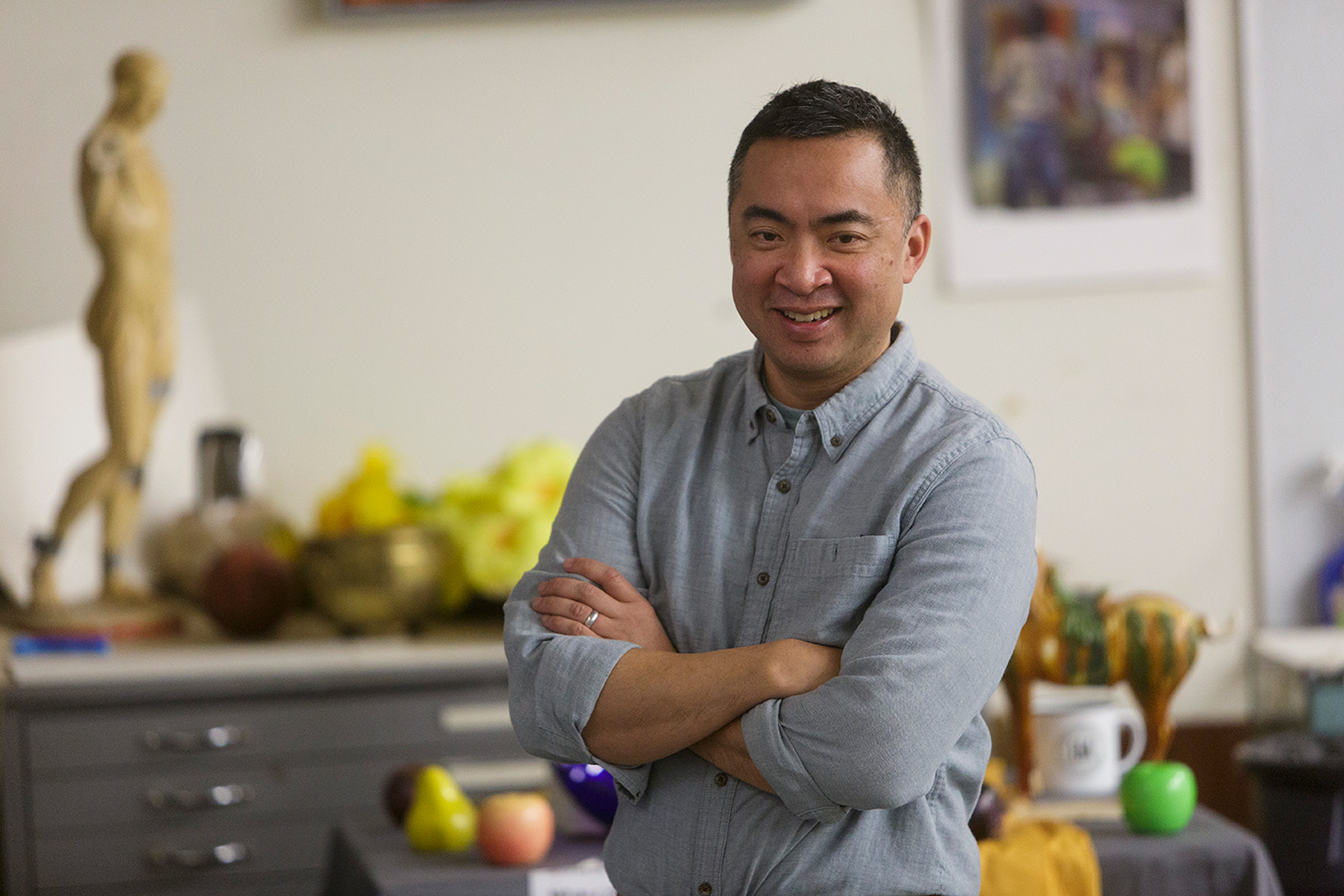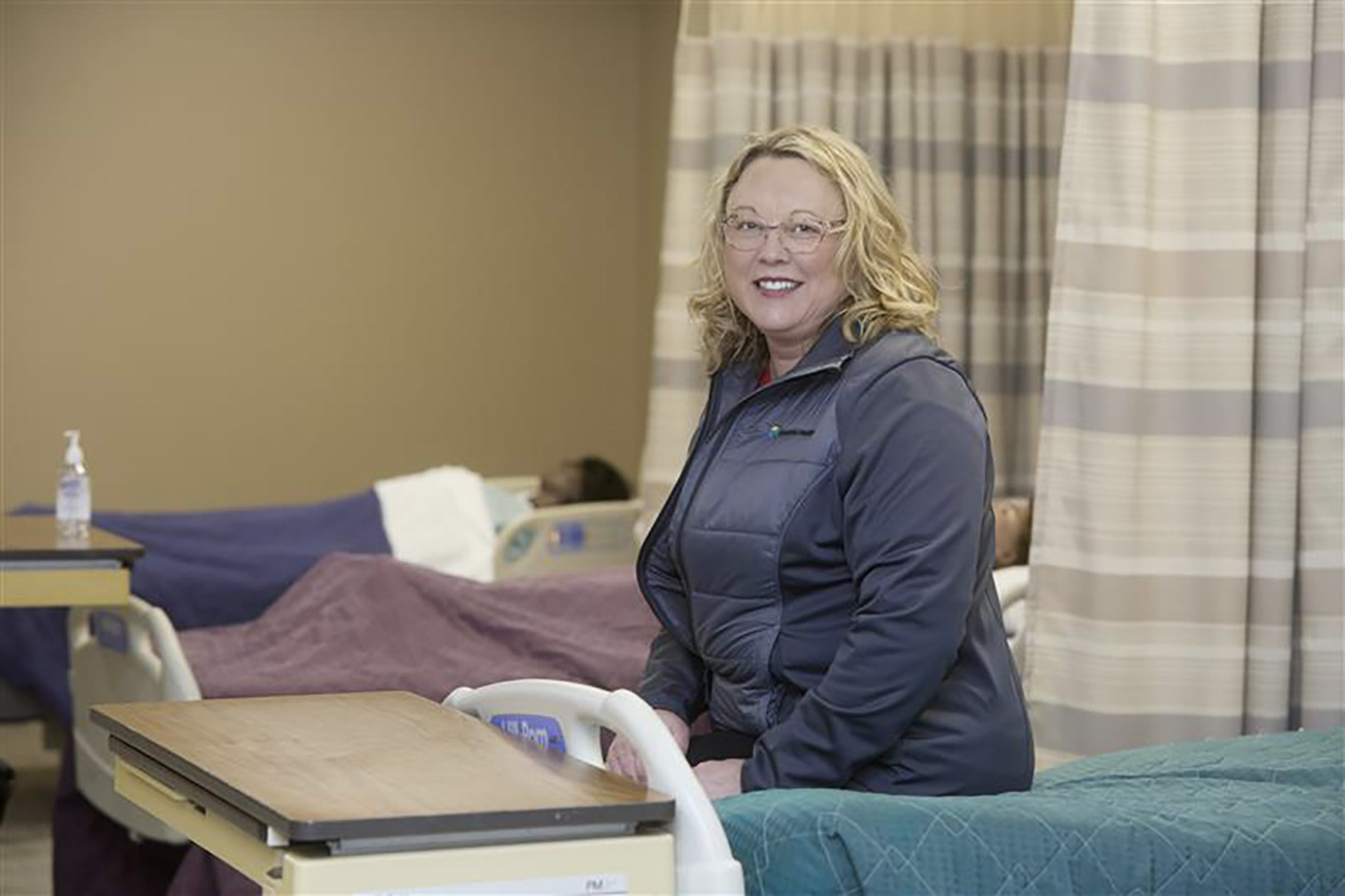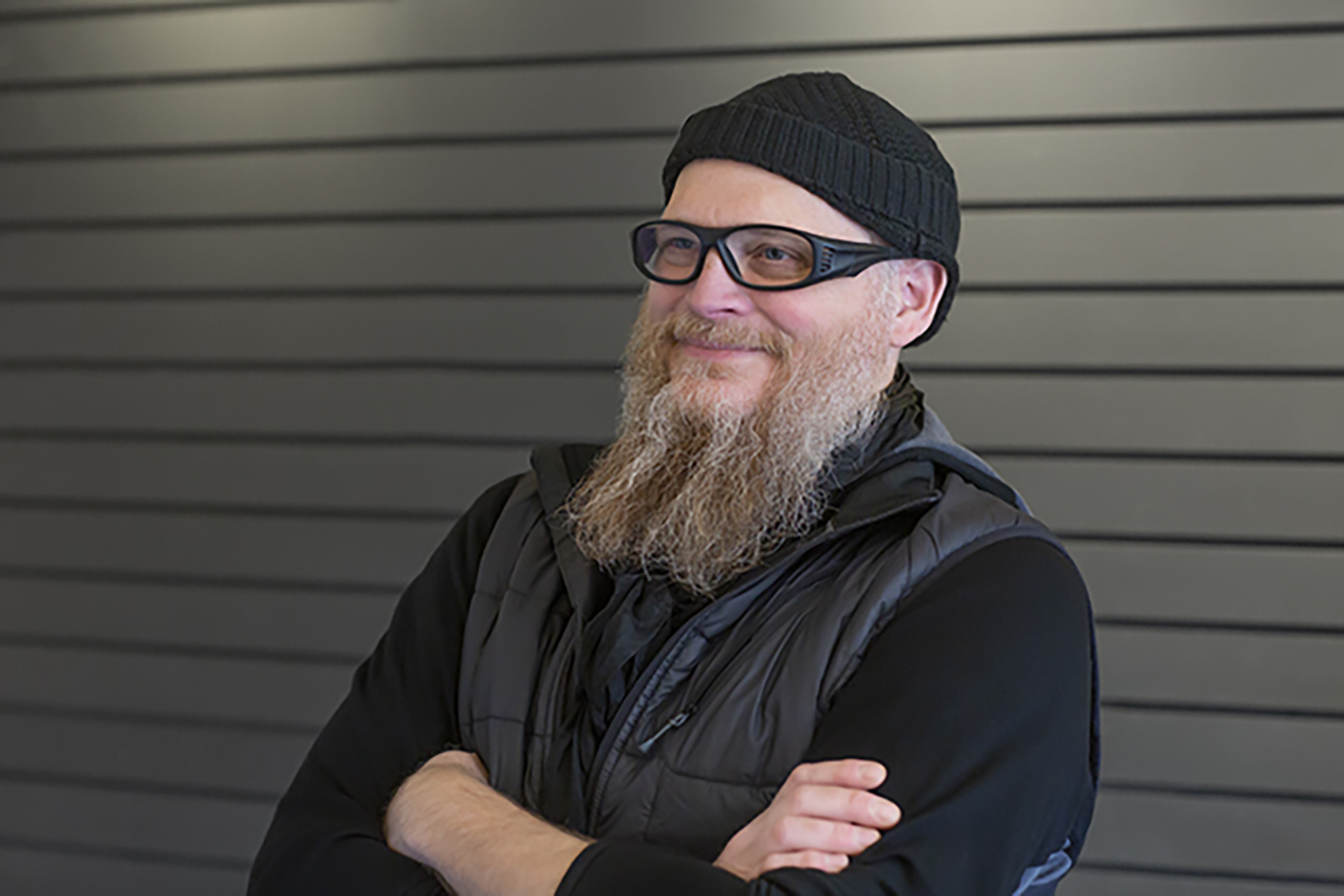Medical Interpreter
Where Art and Science Meet
In the mid-90s, Kasson-Mantorville High School student Christian Rose ’01 (BFA art) participated in a job shadow experience with Mayo Clinic medical illustrators. There he crossed paths with John Hagen ’76 (art and zoology), whom he still keeps in touch with today.
“He was extremely helpful and a supremely nice guy,” Rose said of Hagen. The feeling is mutual. “Christian is a great guy,” Hagen said. “When I retired, he sent me an email and congratulated me.”
Medical illustrators are uniquely connected by their meticulous attention to artistic detail and their curiosity with the human form.
“I was always drawn to the challenge and prestige of becoming a doctor, but at the same time I knew deep down that art was the path I was going to take. So the idea of doing medical art was interesting to me,” Rose said.
Deciding where to pursue that degree was easy. He wanted to do two things in college: study art and play football. His older brother, Mark Rose ’98 (BFA art) was doing both at Moorhead. (Mark currently works as a freelance artist/animator in the gaming industry.)
“I always looked up to Mark and tried to match his abilities, so we kind of fed off of each other growing up, throughout college, and beyond,” Rose said.
He played two years under Coach Ralph Micheli, who recalls the younger brother as a “good player who worked and played hard.”
But football was time consuming and distracting.
“It was painful to quit the team, but I really needed to buckle down and focus on school if I was going to get into a graduate program,” Rose said.
Johns Hopkins University
There are four accredited graduate programs for medical illustration in North America with limited enrollment at each.
The programs have different strengths, Rose said, but he was drawn to Johns Hopkins School of Medicine. “It’s obviously a very prestigious school and that inspired me to become a better student at MSUM. Once I decided to target Johns Hopkins, I put a piece of paper on my bedroom door that read ‘Johns Hopkins University’ so that I’d see that each day when I left for classes. I got my first 4.0 that semester and each semester after that until graduation.”
He applied to and was accepted at both the University of Illinois at Chicago and Johns Hopkins, choosing the latter where he received a full tuition waiver.
Carl Oltvedt, Rose’s advisor, said, “The portfolio he had to submit for graduate admission included very specific projects, not just ones he had done during class. They were looking to see if he could interpret the energy of the form as it moves through space, and he did that very well.”
“There aren’t many who choose to go into medical illustration, but it is competitive,” Rose said. “Hopkins usually accepts around six students.”
The MA in medical and biological illustration includes coursework such as human anatomy, cell physiology and pathology, along with specialized applied art courses in surgical illustration.
“I was very well prepared on the art side with the great mentoring I had from high school through college, but the science courses were difficult,” he said. “I was taking med school classes with some of the brightest students you are going to find anywhere. Johns Hopkins School of Medicine is a great place to go if you want to be humbled.”
Oltvedt developed MSUM’s illustration program and mentored Rose.
“Carl helped me figure out who I was as an artist. I really connected with him, his style and technique, and his sense of humor,” Rose said. “I have a strong tendency toward perfectionism. Some, myself included, might consider it pathological. Attention to detail is a necessity in a field like medical illustration, but left unchecked it can be a bit debilitating. Carl taught me that one can loosen up without sacrificing clarity or impact; that there’s beauty in efficiently capturing your subject or concept. Finding that balance is an issue I still struggle with, but without Carl’s intervention, it’s quite possible I would have imploded as a professional artist by now.”
The admiration is mutual. “He was incredibly talented, dedicated, hard working and receptive, which is what you hope for in a student,” Oltvedt said. “He definitely stood out among his peers. He’s also a genuinely marvelous human being, which makes me respect him all the more.”
Illustrious Career
Medical illustrators comprise a small body of fewer than 2,000 trained practitioners in the world. Yet, medical illustration is a diverse field with most professionals developing specialties.
Rose brings 12 years experience as a medical illustrator/animator to his Denver-based company Plexus Medical Art, LLC, which he started about three years ago with his business partner Khye Kading.
The work is plentiful—partly due to the small number of working professionals and partly due to the variety of specialty areas needing medical animations and illustrations. Attorneys need medical visuals for courtroom exhibits. Pharmaceutical companies require animations to show how drugs interact with the body. Medical device developers need imagery to describe the functionality and benefit of their products. Clinics, clinicians and non-profits need animations showing disorders, conditions and treatments. The list goes on.
“There’s plenty of work for everyone if you’re willing to seek it out, so there’s more camaraderie than competition throughout much of the profession,” Rose said. “And since our knowledge of science is constantly evolving, learning is lifelong. The subject matter and technologies are always changing, which makes it both enjoyable and challenging.”
He works for clients across the United States and abroad. Some of his animations for Mayo Clinic can be seen on YouTube, but most of his work isn’t publicly consumed.
“I’ve done illustrations for clinicians who publish research papers in very specific medical journals. The audience is small. I won't become famous,” he chuckled.
The most rewarding project he’s done thus far was for a San Francisco-based nonprofit that designed a kit for undertrained nurses in Africa. The purpose of the kit is to help these nurses resuscitate newborn babies. Plexus Medical Art was hired to create an animation to accompany the kit.
“Our neonatal resuscitation animation was designed to be a real-time guide viewed on a tablet or PC for nurses as they try to resuscitate a newborn,” Rose said. “About a year ago we received confirmation that it was effective in helping some nurses to resuscitate a baby over there. It’s kind of surreal because we sit at our computers for hours and hours doing these animations and we don’t often hear about such a direct impact of our work in action. That was such a thrill.”
So even though Rose’s animations won’t hang in the Louvre or be Googled by millions, they can certainly can save lives.
This story was first published in Moorhead Magazine, Fall 2016.
Make Sure Your Story Is Heard
Let us know how your life has been changed by being a Dragon: tell us your MSU Moorhead story today!
Send Us Your Story


